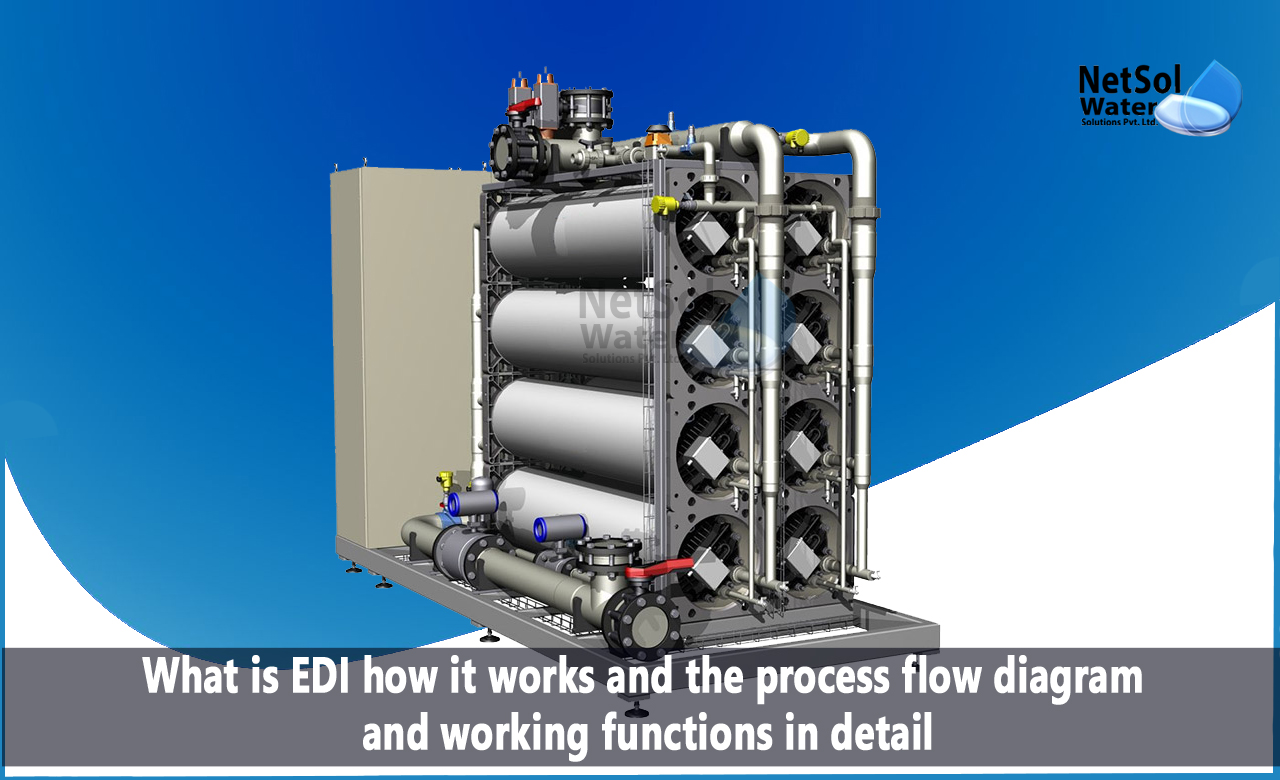What is EDI how it works & the process flow diagram & working function?
In recent years, electro deionization (EDI) has gained popularity as a water treatment technology. EDI is a water purification process that uses electricity to remove ions from the water.
In this blog, we will discuss what is EDI, how it works, and the process flow diagram and working functions in detail.
What is EDI?
Electro deionization is a water purification technology that uses ion-exchange membranes and electricity to remove ions from the water. EDI is often used in conjunction with reverse osmosis (RO) to produce high-quality water for industrial and commercial applications.
How does EDI Work?
EDI works by using a combination of ion-exchange membranes and electricity to remove ions from the water. The process involves four main steps:
- Pretreatment: The first step in the EDI process is pretreatment. The pretreatment process removes any impurities such as particles, dissolved solids, and organics from the water. This step is essential to protect the EDI membranes from fouling and prolong their lifespan.
- Electrodeionization: In the electrodeionization step, water is passed through a stack of ion-exchange membranes. The membranes contain alternating anion and cation exchange resins. When an electrical current is applied to the membranes, the anions and cations are removed from the water and collected on the opposite sides of the membrane. The removed ions are then flushed out of the system.
- Polishing: The polishing step is optional but recommended for higher purity water applications. The polishing step involves passing the water through a final polishing cartridge to remove any remaining impurities.
- Distribution: The final step in the EDI process is the distribution of the purified water. The purified water can be distributed for use in various applications such as boiler feed water, semiconductor manufacturing, and pharmaceutical production.
Process Flow Diagram of EDI:
The following is a process flow diagram of EDI:
Raw Water → Pretreatment → EDI → Polishing → Distribution
Working Functions of EDI:
The working functions of EDI are as follows:
- Ion-Exchange Membranes: The heart of the EDI process is the ion-exchange membranes. These membranes are made of a polymeric material that contains anionic and cationic exchange resins. When an electrical current is applied to the membranes, the resins remove the ions from the water.
- Electrical Current: The electrical current is used to create a concentration gradient across the ion-exchange membranes. The concentration gradient allows the ions to be removed from the water and collected on the opposite sides of the membrane.
- Polishing Cartridge: The polishing cartridge is used to remove any remaining impurities from the purified water. The polishing cartridge typically contains activated carbon, mixed bed resin, or other media that can remove any remaining contaminants.
Conclusion:
Electro deionization is a water purification technology that uses ion-exchange membranes and electricity to remove ions from the water. The EDI process involves four main steps, pretreatment, electrodeionization, polishing, and distribution. The working functions of EDI include ion-exchange membranes, electrical current, and polishing cartridges. EDI is a highly effective water treatment technology that can produce high-quality water for industrial and commercial applications.
Contact us on +91-9650608473 or send an email to enquiry@netsolwater.com to find out more.



